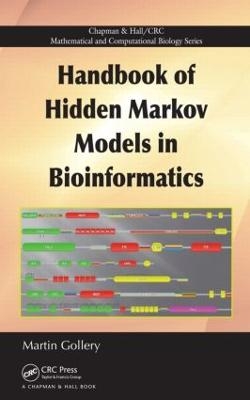
Handbook of Hidden Markov Models in Bioinformatics
Seiten
2008
Chapman & Hall/CRC (Verlag)
978-1-58488-684-6 (ISBN)
Chapman & Hall/CRC (Verlag)
978-1-58488-684-6 (ISBN)
Focuses on how to choose and use various methods and programs available for HMMs. This work explores HMM implementations important in bioinformatics, including SAM, HMMER, Wise2, PSI-BLAST, and Meta-MEME, and shows how numerous databases and programs, such as Pfam, SMART, SUPERFAMILY, and PANTHER, are used in bioinformatics projects.
Demonstrating that many useful resources, such as databases, can benefit most bioinformatics projects, the Handbook of Hidden Markov Models in Bioinformatics focuses on how to choose and use various methods and programs available for hidden Markov models (HMMs).
The book begins with discussions on key HMM and related profile methods, including the HMMER package, the sequence analysis method (SAM), and the PSI-BLAST algorithm. It then provides detailed information about various types of publicly available HMM databases, such as Pfam, PANTHER, COG, and metaSHARK. After outlining ways to develop and use an automated bioinformatics workflow, the author describes how to make custom HMM databases using HMMER, SAM, and PSI-BLAST. He also helps you select the right program to speed up searches. The final chapter explores several applications of HMM methods, including predictions of subcellular localization, posttranslational modification, and binding site.
By learning how to effectively use the databases and methods presented in this handbook, you will be able to efficiently identify features of biological interest in your data.
Demonstrating that many useful resources, such as databases, can benefit most bioinformatics projects, the Handbook of Hidden Markov Models in Bioinformatics focuses on how to choose and use various methods and programs available for hidden Markov models (HMMs).
The book begins with discussions on key HMM and related profile methods, including the HMMER package, the sequence analysis method (SAM), and the PSI-BLAST algorithm. It then provides detailed information about various types of publicly available HMM databases, such as Pfam, PANTHER, COG, and metaSHARK. After outlining ways to develop and use an automated bioinformatics workflow, the author describes how to make custom HMM databases using HMMER, SAM, and PSI-BLAST. He also helps you select the right program to speed up searches. The final chapter explores several applications of HMM methods, including predictions of subcellular localization, posttranslational modification, and binding site.
By learning how to effectively use the databases and methods presented in this handbook, you will be able to efficiently identify features of biological interest in your data.
Gollery, Martin
Introduction to HMMs and Related Profile Methods. Profile HMMs.HMM Methods.HMM Databases.Building an Analytical Pipeline. Building Custom Databases. Speeding Your Searches.Other Uses of HMMs in Bioinformatics. Index.
| Erscheint lt. Verlag | 12.6.2008 |
|---|---|
| Zusatzinfo | 2 Tables, black and white; 1 Halftones, black and white; 57 Illustrations, black and white |
| Sprache | englisch |
| Maße | 156 x 234 mm |
| Gewicht | 412 g |
| Themenwelt | Naturwissenschaften ► Biologie ► Genetik / Molekularbiologie |
| ISBN-10 | 1-58488-684-6 / 1584886846 |
| ISBN-13 | 978-1-58488-684-6 / 9781584886846 |
| Zustand | Neuware |
| Haben Sie eine Frage zum Produkt? |
Mehr entdecken
aus dem Bereich
aus dem Bereich
50 Meilensteine der Genetik
Buch | Hardcover (2022)
Librero b.v. (Verlag)
CHF 13,90


